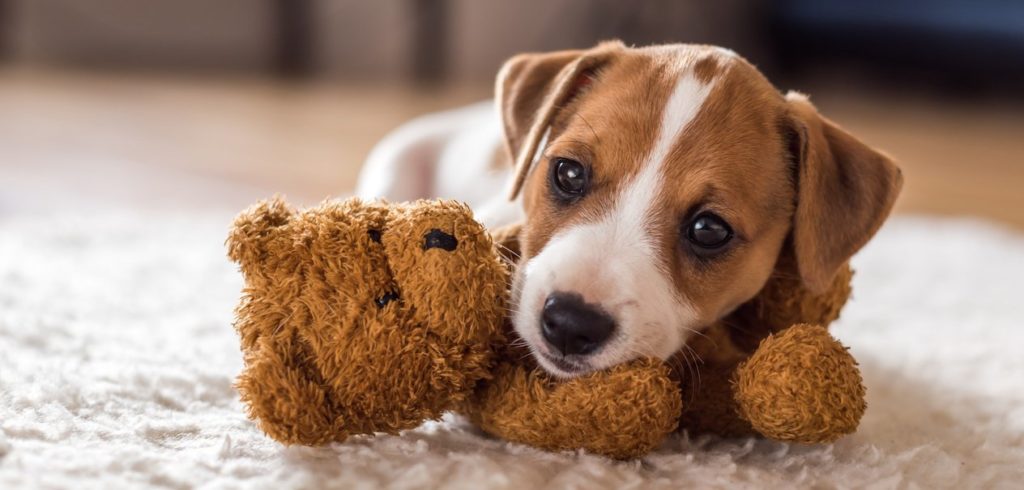Our pets are our best friends.
They’re sweet, cuddly, adorable and yet they can cause the most damage to our furnishings.
There are three types of dilemmas that we see due to pet urine: odors, staining and discoloration.
Let’s cover the odor problem first. It’s the largest of the pet urine issues on carpet we deal with every day.
Pet urine odor
There are many factors that determine how strong urine smells.
Many people don’t realize that the residue left behind from urine is salt crystals.
When the moisture evaporates, the crystals remain. Those salt crystals react with moisture in the air, which produces a gas, and that’s what we smell.
The construction of the carpet, density, fiber type (synthetic or natural-wool, cotton, jute) and the diet of the pet all relate to how much salt the carpet hangs onto.
The weather’s role
If you have urine spots on your carpet, you may notice that at certain times of the year, the odor seem to be stronger.
Most homes have less humidity in the air in the winter. The heat is usually cranked on, the air outside is cool and dry with low humidity.
In spring and early summer, the heating systems in your home are used much less and doors and windows are left open to let in fresh air.
The fresh air has moisture, or humidity, which causes the odor to be stronger.
The stench will stay, unless…
Without removal of the salt crystals, urine spots can give off odors for many years.
It’s not the kind of thing that you can air out like a musty piece of clothing from your closet. If you hang an items outside, in time, the air will remove the odor.
Urine salt crystals need to be intentionally removed out of the fiber, the backing of the carpet and – in extreme cases – even the pad and sub-floor may require replacement.
Correct cleaners – and methods – are key
There are many products available on store shelves that “claim” they will remove pet urine odor from carpet, but most of them are cover-ups or perfumes, for example, Febreeze, Nature’s Miracle and Clorox pet odor removers, to name a few.
These deodorizers cover the offending urine orders by putting an even stronger scent on top – a very temporary solution.
There are other in-home products available that have an enzyme, which, in the perfect circumstances, can digest the urine salts.
The downside of enzymes
The problem with enzymes is that the temperature has to be correct, the PH of the carpet has to be just right, and there can’t be any lingering spot cleaners left in the fiber.
The enzyme needs to saturate the affected area while staying wet for 24+ hours.
These types of products can leave a sticky residue, as well as saturate the backing of the carpet, causing it to break down.
You’re left with unsightly wrinkling or bubbling, (as seen below).
The most effective method for urine removal is to be able to “clean” out the urine or remove the urine salts completely.
To do this, a low PH cleaning agent is used to help dissolve the urine salts and allow them to be absorbed back into a liquid. The carpet is then rinsed with clear water and dried quickly.
In many cases, this process has to be repeated many times before all of the salts are removed.
The goal is to NOT LEAVE anything in the carpet to cover up the urine smell. You’re going for clean and fresh smelling carpet fibers with no added chemicals or perfumes.
Do it yourself tips
There are some ways you can handle pet urine issues on carpet on your own.
Once you notice the first urine stain, rinse the area thoroughly with clear water.
Use a wet/dry vacuum with the wet filter installed to extract the moisture from that area, repeating the process two or three times.
Put a fan on the area and be sure to protect the floor underneath.
If you would like to attempt to use an enzyme product, contact one of our experts for product recommendations.
Always test the area first to make sure you’re not causing additional damage such as color loss or texture change.
Staining, bleaching or discoloration
We typically see urine stains in lighter colors; white, beige and light blue.
Urine has the ability to pull tannins or a darker color dye out of natural fibers such as cotton, wool or jute.
The area in which a pet has an accident can have a light brown ring, almost as if someone has spilled a cup of coffee in the area (as seen in the photo above).
Solutions
The first step in removing this stain is to try a neutral spotting agent, such as Spot Begone or a detergent-vinegar solution, or a product you purchase from a commercial carpet cleaning vendor.
Here’s what to do:
- Blot up the surplus spillage.
- Using the detergent solution, work from the outer edge of the stain, using a little at a time.
- Blot with dry cloths frequently throughout the process.
For many of these stains, a normal cleaning procedure will lighten or remove the brown stain.
If normal cleaning doesn’t remove the discoloration or stain, the next step would be to use a mild acid, such as vinegar, over the area.
Let the vinegar sit 5-10 minutes, then use the spotting solution again and re-clean.
This process will leave a vinegar-like smell, but the odor will dissipate over time as it thoroughly dries.
Another way to remove the stain would be to use a mild oxidizer or bleaching agent.
This is where you would want to get a professional involved. It’s easy to go too far and remove color from the underlying fibers.
Caution: Normal household bleach can actually disintegrate wool and cotton fibers. Using the right type of products is essential.
Some over-the-counter pet-urine products have bleaching agents that cause color loss that you won’t see immediately.
Be aware, as more often than not, the bleach is not activated until it is touched by water (as seen in the picture above).
In fact, we often clean a carpet, only to run it through our regular cleaning process and discover the carpet owner used a product that caused a bleach stain that doesn’t show up until after it’s been touched by our water.
The truth is, not all urine stains can be removed.
Heavy urine stains
If there are a few heavy urine stains (meaning a lot of liquid saturated the carpet), the urine will reach the padding underneath the carpet.
When the top of the carpet is cleaned, it doesn’t reach the pad, leaving the crystals in the carpet backing and pad, leaving that dreaded urine odor when it dries.
Solutions
Each saturated stain can be treated by one or both of these methods, depending on the severity of the urine stain:
- Sub-floor extraction. This process thoroughly rinses the urine out of the carpet, carpet backing and pad, removing the crystals.
- Injection. An injection (with a very LARGE needle, as seen below) containing an enzyme product can be injected into the padding of the carpet, typically after the sub-floor extraction process.
Extensive urine damage
When your pet consistently urinates in one concentrated area, such as a corner of a room, the damage can become quite extensive.
The urine saturates the padding, floorboard and, in some cases, the baseboard and walls.
As seen below, the urine has saturated the floorboard and baseboard:
Extensive urine damage
When your pet consistently urinates in one concentrated area, such as a corner of a room, the damage can become quite extensive.
The urine saturates the padding, floorboard and, in some cases, the baseboard and walls.
As seen below, the urine has saturated the floorboard and baseboard:
In these situations, the crystals are left in the affected areas. If the surface of the carpet is cleaned and treated, the odors will still come from the backing and sub-floor under the carpet.
Solutions
For these extreme cases, both the front and back of the carpet need to be cleaned and treated.
The padding in the affected area will need to be replaced, and the affected floor and walls should be treated with a primer/sealer/stain blocker.
If the baseboards are affected, they will also need to be replaced.
This process can be costly, depending on the size of the area, though it’s still usually less expensive than getting new carpet.
Say goodbye to pet urine issues on carpet
Treating pet stains as quickly as possible will help to avoid odor, staining and substantial damage.
Sometimes, the issue can rear its ugly head without you even knowing it. For example, a carpet may not show staining, yet after a time of continuous wetting, it can’t help but present itself all of the sudden with a strong odor.
Or, perhaps it’s a room that’s not visited very often. One day, you notice that there are stains taking over one corner of the room.
Whatever the situation or problem, most of the time, a solution can be found and you can continue loving on your pet.
Are you dealing with pet urine issues in your home?
Hire a Professional Cleaner
There are many ways to keep your carpets looking great, from vacuuming regularly to spot-cleaning spills and stains right away. For a deep clean, you should consider hiring professional cleaners. Hammond Knoll is a professional carpet cleaning company that can help you keep your carpets looking and smelling new.
Here at Hammond Knoll, we service Washington cities from Tacoma to Olympia to Puyallup and beyond.
We use advanced equipment to wash carpet floors and remove dirt. Professional carpet cleaners have the knowledge and expertise needed to provide thorough yet gentle care for all types of carpets in any environment. Contact us today to get started on restoring the beauty of your carpets!

